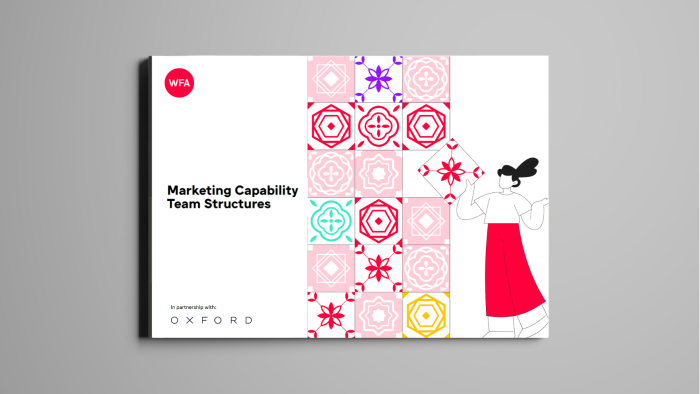Rethinking capability team structures
Marketing Capability team models differ from company to company, so which one is the best? Brenna Brandes, Global Marketing Services Manager at WFA, explains the strengths and weaknesses of some of the most common models.
Share this post

Please note that this research is WFA member only content. Interested in WFA membership? Get in touch with our team at membership@wfanet.org.
The rise of marketing capability begs some questions: how are some of the biggest global brands approaching upskilling and who within a marketing organisation is responsible for this essential, internal change?
Forums such as WFA’s Marketing Capability Forum bring together capability leaders for valuable connection and conversation. At a recent in-person forum, more than two thirds (67%) reported they aren’t completely satisfied with their current team setup.
Understanding how others solve this puzzle is part of the solution for many and the Forum provides an opportunity for leaders to learn from one another and to gain insight on other approaches to setting up a winning Marketing Capability team.
To share these learnings more widely, WFA has published a new report in partnership with strategic partner Oxford. Marketing Capability Team Structures reveals that, as with so many things in life, there isn’t one simple answer, identifying three recurring models: Global, Centre of Excellence and Network.
Global
Global models work tend to occur in organisations where category depth and specific skills are highly valued. An example would be a healthcare company operating in both consumer healthcare and rare diseases, with very different ways to engage target audiences.
Here, capability is primarily managed via category teams who develop and deliver business-focused capability. The emphasis is on building category expertise or enabling re-application of best practice. There may also be a small supporting capability team designed to address specific need gaps at both a global and local level.
A possible weakness of this approach is that it can result in limited sharing between categories, as this tends to happen only informally at a global level.
Centres of Excellence
A Centre of Excellence approach, by contrast, seeks to raise the capability ceiling in an organisation where there is an established ‘way’. Responsibility sits with teams (markets or brand teams) to identify their own capability objectives.
The model brings together a global collection of internal expert teams that markets can call in to improve capability in particular areas. These teams will come directly to a market to provide training, tools, and advice to best drive learning.
The danger of taking this path is that it can be slow to respond to changing environments, as the global expertise team needs to be formed and content needs to be developed. There may also be high demand for particular areas of expertise, which can slow down delivery of learning to multiple markets.
Network
Finally, a network structure is best for organisations with a strong leader-led culture where capability leaders are pro-active, take responsibility for the development of their teams and draw learning assets accordingly.
In this model, learning and capability building is designed into the entire organisation from top to bottom. High expectations of individuals create a culture of continuous learning and a high degree of tailoring to market/region needs.
An advantage of this model is that in order to sustain ongoing development, limited global or regional resources are necessary. Strong networks amongst local teams provide the impetus for designing and building relevant learning.
A challenge is that duplication between teams and regions is possible, as they often operate highly independently.
Team size
Capability teams are generally small, but the number of full time employees in capability teams (of any model) typically increased in line with the size of the business.
As a general rule, the larger the team, the more likely it is to have responsibility dispersed geographically (by region and market) and to include subject matter experts (SMEs) and generalist programme managers.
SMEs also tend to lead much of the work in ‘Centre of Excellence’ structures. Those in smaller, global-based teams tend to be generalists, often working with external providers for design and development of programmes. This is often also the case for ‘Network’ structures.
A Marketing Capability team exists to bolster and support an organisation’s marketing department. The way it is set up should reflect the scope and needs of the organisation, meaning there is no one-size-fits-all approach.
The bottom line is that the right structure depends on structure, category and organisational structure and each company needs to adapt the classical models to suit their own circumstances.
If you have any questions or are interested in learning more about WFA’s Marketing Capability forum, please reach out to Brenna Brandes.




